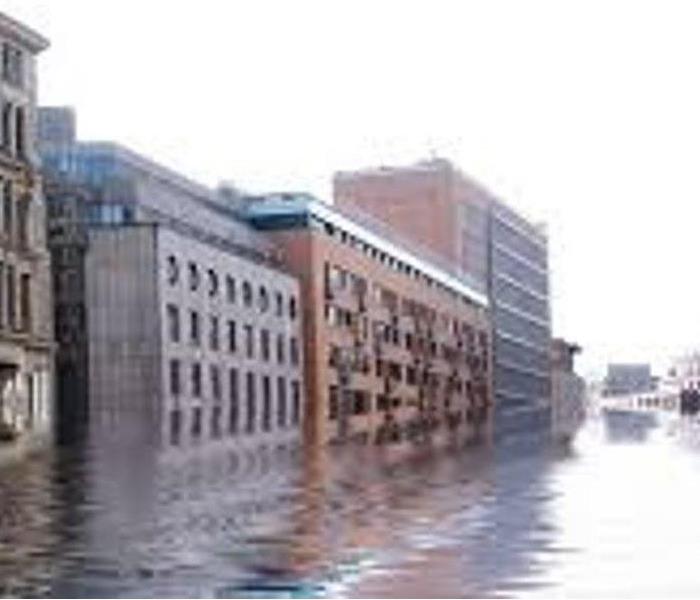STEPS TO RESTORING A COMMERCIAL BUILDING AFTER WATER DAMAGE
5/3/2022 (Permalink)
 Water damage can be a catastrophic event but when the building is a commercial enterprise it can be debilitating if not handled properly.
Water damage can be a catastrophic event but when the building is a commercial enterprise it can be debilitating if not handled properly.
Step 1: Determine the Risks
Electrical Hazards
Electrical Hazards can include power strips in offices getting wet, water from above impacting junction boxes, lights, fire alarm systems etc. All power to impacted areas where electrical systems could be impacted should be immediately shut off at the circuit breaker panel if safe to do so. A qualified electrician should be hired to assess any damages and to ensure all areas are safe from shock hazards.
Slip and Fall Hazards
Slip and fall hazards are some of the most common hazards in any water damage event. Every effort should be made to reduce risks to include water removal, proper warning signs and restricting access to damaged areas.
HVAC System Contaminations
HVAC systems should be assessed to determine if any moisture has impacted the system. Contaminated water poses an imminent risk to occupants in the building due to the risk of bacteria, and other microorganisms becoming airborne. Even clean water when stagnant in the HVAC system for an extended period (typically over 48 hours) rapidly degrades and can result in deteriorated air quality and potential exposure risks. After water damage events impacting a mechanical system, a qualified HVAC expert should assess the system and the associated ductwork should be cleaned by a NADCA certified firm.
Bacterial Contamination
Category 1 or “clean” water damage situations are much less of a risk in terms of immediate health risks to occupant health and safety. Category 2 (contaminated water with potential risk of harm such as groundwater) and category 3 (significant contamination such as sewage) water damage disasters pose a much greater risk to occupant health due to potential viruses, bacteria, chemicals, and disease-causing pathogens typically present in this type of water. Immediate evacuation of occupants is often prudent in category 2 water damage events and is almost always required in category 3 water damage events.
Step 2: Mitigate Commercial Water Damage
Proper mitigation during water damage is a critical step in restoring a building–but what exactly does mitigation mean with respect to restoring a building? Mitigation involves removing all excess water, quickly identifying salvageable vs non-salvageable building materials/contents, quickly identifying class 4 areas of damage which are difficult/technical drying challenges with bound moisture and establishing a restoration plan for demolition and drying. The ultimate goal of mitigation in commercial settings is to dry the structure with as little demolition as possible and to limit downtime of the operation.
The Key to Success is Having a Water Damage Clean up Process in Place
Good communication throughout the entire process is key to a successful outcome. This includes communication with facilities management, subcontractors, water mitigation techs, etc. Every step should be thoroughly documented, including photos, notes, and moisture mapping. A pre-set disaster emergency response plan is the best way to ensure a rapid response and timely building restoration. Most progressive companies have some type of plan in place which should include all of the building’s mechanical information, electrical layouts/shut-offs, water shutoffs, location of critical documents, staging areas and contact information for key employees/contractors.
No one ever wishes for a water damage event to strike their building, but chances are that at some point you’ll be the victim of a water damage disaster. When disaster does strike have a plan already in place and more importantly ensure you call in a qualified expert, such as SERVPRO of Streamwood, Bartlett, West Chicago, and Warrenville to perform the required mitigation. With a well thought out and well-executed mitigation/drying plan you’ll be up and running in no time.





 24/7 Emergency Service
24/7 Emergency Service